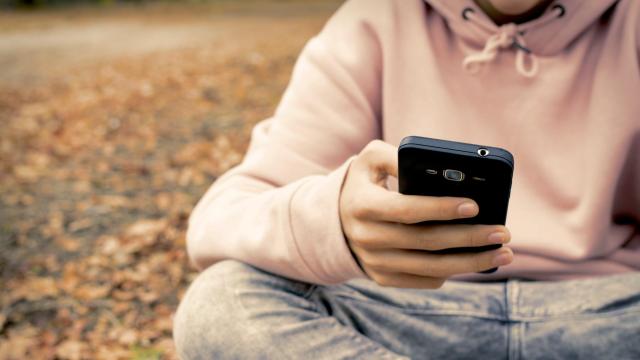Quick, how do you hold your phone? Is the bottom of it resting on your pinkie, while you cradle the back with your index, middle, and ring fingers, and your thumb does all the scrolling? Would you be surprised if we told you that this most natural and intuitive way of holding your phone is wrong?
While the one-handed claw is seemingly the most convenient way to grip your device, over prolonged periods of time, it could be doing damage to your wrist and aggravating your ulnar nerve — among other issues.
What is smartphone pinkie?
You may already be familiar with the term “smartphone finger,” also known as texting tendinitis, texting thumb, and gamer’s thumb. But now we must also contend with “smartphone pinkie” (not a medical term — yet). According to Healthline, “The fingers most impacted by holding a smartphone, tablet, or video game controller are your pinky and thumb,” which can become cramped or inflamed.
Ann Lund, an occupational therapist and certified hand therapist at the Mayo Clinic told the Washington Post that given the smaller size of the pinkie, it won’t “tolerate the pressure and the positioning as well as a larger digit.” Michelle G. Carlson, a hand and upper extremity surgeon at the Hospital for Special Surgery in New York added that using your pinkie to hold up the weight of your phone can strain the ligament that connects the finger to your hand. But that’s not all.
What is the ulnar nerve?
After this tweet telling us all to stop using our pinkie as a phone anchor went viral, Ben Lombard, a member of the UK’s Chartered Society of Physiotherapy told HuffPost UK, “We tend to hold our phones with the little finger underneath supporting the weight of the phone and our wrist turning inward to told the screen to our faces. This can cause ulnar nerve compression if sustained for long periods of time.”
One of three main nerves in your arm, the ulnar nerve runs from the armpit, down to your elbow, alongside the ulna (the long bone in the forearm) and finally to the pinkie side of your palm. According to the Cleveland Clinic, “It controls nearly all of the small muscles in the hand.” Ulnar nerve “entrapment” happens when there’s direct pressure on the nerve “in the elbow or wrist [which] causes a pinched nerve, nerve (neuropathic) pain and neuropathy (nerve damage).”
And then there’s the median nerve
In a 2017 study, Peter White, assistant professor in the department of health technology and informatics at Hong Kong Polytechnic University, examined the effects of electronics device overuse on the median nerve, which runs alongside the ulnar nerve and helps us move our forearms, wrists, hands and fingers. White found that students who held electronic devices in excess of five hours a day experienced more wrist and hand pain than “non-intensive users” (less than five hours a day).
In a follow-up study, White found that, “Wrist deviation from neutral [an all fingers extended position] can lead to more pronounced deformation of the median nerve.” To minimise the damage, “It is important to keep the wrist as near to the neutral position as possible during computer-related work and avoid keeping the thumb and fingers in a static flexed position when using mobile devices, especially for single-hand use.”
So how should we hold our phone?
In an interview with the National Desk, hand surgeon Dr. Steve Beldner said though everyone wants a small, thin device, “Our hand wasn’t designed to handle small objects.” Ideally, instead of zeroing our thumb in on a thin object, which loads the joint unfavorably, we want to “bring the thumb out into what we call abduction or away from the palm.”
To do this, Beldner said, make the device thicker — by propping a rolled up washcloth or t-shirt behind it — to take the stress off the joint. (Presumably, a PopSocket provides some of the same joint relief.) He also suggests keeping your elbow and wrist as straight as possible to allow for better circulation through the nerve.
Occupational hand therapist Dina Delopoulos advises smartphone users to take frequent rest breaks and stretch the flexor and extensor muscles by pushing our fingers up and back, perpendicular to the wrist. She recommended using a non-restrictive but supportive CMC neoprene splint and putting the phone down on a flat surface to scroll with fingers other than your thumb whenever possible. Driving the point home, she cited a patient “who was immobilized in a cast for four weeks because he had severe tendinitis in his thumb. From the phone.”
To recap: Staring at our phones nonstop is unnatural and damaging, not just for our mental health, but for our pinkies, thumbs, and forearm nerves. So consider this your daily reminder to quit scrolling, stretch your wrists, and go outside.

Leave a Reply
You must be logged in to post a comment.